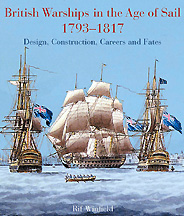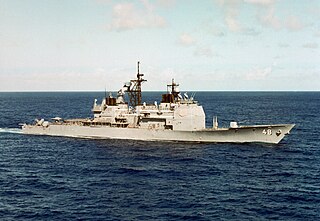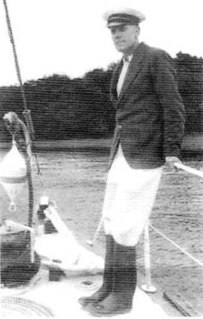
The American Association for the Advancement of Science (AAAS) is an American international non-profit organization with the stated goals of promoting cooperation among scientists, defending scientific freedom, encouraging scientific responsibility, and supporting scientific education and science outreach for the betterment of all humanity. It is the world's largest general scientific society, with over 120,000 members, and is the publisher of the well-known scientific journal Science, which had a weekly circulation of 138,549 in 2008.

HMS Warrior is a 40-gun steam-powered armoured frigate built for the Royal Navy in 1859–1861. She was the name ship of the Warrior-class ironclads. Warrior and her sister ship HMS Black Prince were the first armour-plated, iron-hulled warships, and were built in response to France's launching in 1859 of the first ocean-going ironclad warship, the wooden-hulled Gloire. Warrior conducted a publicity tour of Great Britain in 1863 and spent her active career with the Channel Squadron. Obsolescent following the 1871 launching of the mastless and more capable HMS Devastation, she was placed in reserve in 1875, and was "paid off" – decommissioned – in 1883.

The Romanian Navy is the navy branch of the Romanian Armed Forces; it operates in the Black Sea and on the Danube. It traces its history back to 1860.

The Director of Naval Construction (DNC) also known as the Department of the Director of Naval Construction and Directorate of Naval Construction and originally known as the Chief Constructor of the Navy was a senior principal civil officer responsible to the Board of Admiralty for the design and construction of the warships of the Royal Navy. From 1883 onwards he was also head of the Royal Corps of Naval Constructors, the naval architects who staffed his department from 1860 to 1966. The (D.N.C.'s) modern equivalent is Director Ships in the Defence Equipment and Support organisation of the Ministry of Defence.
The World Ship Society (WSS) is an international society devoted to maritime and naval history. Founded in 1946 as Ship News Club in order to distribute shipping information to correspondents, the society now has thousands of members in dozens of branches across the world. It publishes the monthly magazine Marine News and the quarterly magazine Warships for its membership.

The first USS Blakely was laid down on 12 January 1899 at South Boston, Massachusetts, by George Lawley & Son and launched on 22 November 1900. Sponsored by Miss Nellie M. White; and commissioned on 27 December 1904, with Lieutenant Charles E. Courtney in command.It was named for Johnston Blakeley commander of the USS Wasp.
William Avery Baker was a distinguished naval architect of replica historic ships and a maritime historian, who was curator of the Francis Russell Hart Nautical Museum at Massachusetts Institute of Technology 1963-1981.

The Sail and Steam Navy List: All the Ships of the Royal Navy 1815–1889 by Rif Winfield and David Lyon is a historical reference work providing details of all recorded ships in commission or intended to serve in the Royal Navy from 1815 to 1889. Where available in Admiralty records, it gives the location of construction, dates of construction, principal dimensions and tonnage, armament, machinery and fate of every ship of the Royal Navy over the period.

John Willis Griffiths was an American naval architect who was influential in his design of clipper ships and his books on ship design and construction. He also designed steamships and war vessels and patented many inventions. Maritime historian William H. Thiesen wrote, "Of all the nineteenth-century American shipbuilders, John W. Griffiths did more than any other builder to champion American shipbuilding methods. An experimenter, an advocate for formal ship-design education, and a working intellectual, Griffiths proved to be most remarkable of America’s nineteenth-century shipbuilders.”

Johan Olfert Fischer was a Danish officer in the Royal Dano-Norwegian Navy. He commanded the Dano-Norwegian fleet against British forces under Lord Nelson during the Battle of Copenhagen on 2 April 1801.

British Warships in the Age of Sail is a series of four books by maritime historian Rif Winfield comprising a historical reference work providing details of all recorded ships that served or were intended to serve in the Royal Navy from 1603 to 1863. Similar volumes dealing with other navies during the sailing era have followed from the same publisher.
Conway Publishing, formerly Conway Maritime Press, is an imprint of Bloomsbury Publishing. It is best known for its publications dealing with nautical subjects.

World of Warships is a free-to-play naval warfare-themed massively multiplayer online game produced by international game developer and publisher Wargaming after releasing the first military-oriented F2P MMO World of Tanks. Besides random battles against others, player can play cooperative battle types against bots or an advanced PvE battle mode called Scenario battles. For the most skilled players, two seasonal competitive modes are available – Ranked and Clan battles. The game was released for Microsoft Windows on September 17, 2015 and later for Steam and Microsoft Store on November 15, 2017.
BAP Victoria was an ironclad monitor built for the Peruvian Navy in the mid-1860s. The ship participated in the Battle of Callao in 1866 during the Chincha Islands War of 1864–66 and was not damaged. Her ultimate fate is unknown.

The Palestro-class ironclad floating batteries were four floating batteries built for the French Navy in 1859-62 to replace the Crimean War-built vessels because of fears that the 1855 ships would deteriorate because they had been built hurriedly with poor wood.

In the 1986 Black Sea incident on 13 March the American cruiser USS Yorktown and the destroyer USS Caron, claiming the right of innocent passage, entered the Soviet territorial waters near the southern Crimean Peninsula. The warships passed within six miles of the Soviet coast, where they were soon confronted by the Soviet frigate Ladny. The commander of Ladny notified the U.S. warships that they had violated Soviet territorial waters and requested that they depart immediately. The U.S. warships confirmed receipt of the warning but did not change course. The Soviet command placed its Black Sea air and naval forces on combat readiness and dispatched border guard vessels and naval aircraft to intercept the U.S. warships.
Robert Francis Flemming Jr. was an African-American inventor and Union sailor in the American Civil War. He was the first crew member aboard the USS Housatonic to spot the H.L. Hunley before it sank the USS Housatonic. The sinking of USS Housatonic is renowned as the first sinking of an enemy ship in combat by a submarine.

Oscar Parkes OBE was a Royal Navy surgeon, naval historian, marine artist, and editor of Jane's Fighting Ships from 1918 to 1935. He was an associate of the Royal Institution of Naval Architects. The Imperial War Museum and the National Maritime Museum have permanent collections of his artwork. His book British Battleships: "Warrior", 1860 to "Vanguard", 1950. A History of Design, Construction and Armament is regarded as a definitive source.

















